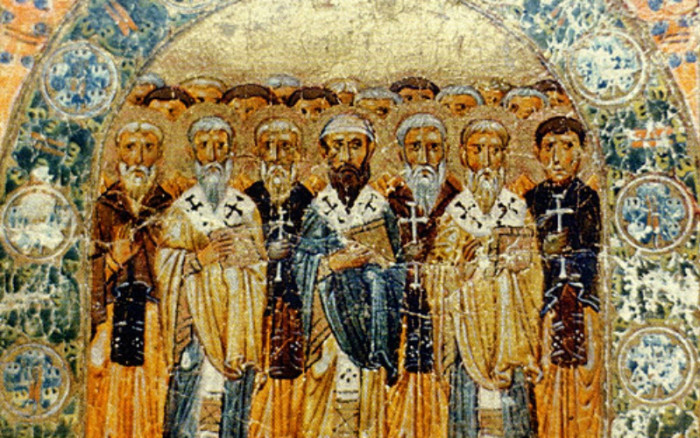Those who study and observe the ebb and flow of culture say that we are no longer a “post-Christian” culture but have actually returned to a “pre-Christian” state. If that is true, we would do well to take a closer look at the Early Church and see what we can learn in order to more faithfully live and effectively share the Gospel of Jesus Christ.
Table Talk meets each Wednesday from 5:30-6:45pm.
Here’s what each week of this series will focus on:
March 13: “How the Early Church Was Made”
Acts gives us the “formula” for how the early church was made: the ministry of prayer and the power of the Holy Spirit. This first session will look at God’s blueprint for the church as laid out in scripture and illustrated in the first century. In matters as diverse as apostolic authority, church organization and discipline, and the confession of doctrine through creeds and hymns, we’ll explore how the “apostolic” and “sub apostolic” church was established. Whether it’s making a church, growing a church, or running a church, the divine formula is still the same today—prayer and the Holy Spirit.
March 20: “Going, Loving, Dying: The Missionary Church in Action”
The early church was a missionary church. It was a church that went to the ends of the earth, just as Jesus had commanded. The early church was also known for its love. In a groundbreaking study in 1996, American sociologist Rodney Stark argued that the early church grew in direct proportion to its love for others. Finally, the church evangelized by dying—that is, through the ultimate witness of martyrdom. Just as Jesus had commanded, the first believers “took up their cross” and followed Him. Christians today have been called to the same missionary task of going, loving, and dying to self.
March 27: “Lessons from the Catacombs”
Were you taught that the catacombs were places of refuge in times of persecution? Did you learn that the fish symbol was a secret message? Well, think again! There are many persistent myths about the catacombs. These burial places did, in fact, serve an important purpose in the early church—but it’s not entirely what you think. This session will explore the surprisingly rich world of catacomb art that will model for us a dynamic way of reading and applying scripture as we live for Christ in an ungodly world. The message of the catacombs is the message of Easter: Christ has triumphed over death!
April 3: “Contending for the Faith: Heresy and Orthodoxy”
The battle over “sound doctrine” was the defining challenge of the early church. To this day, we recite creeds that were formulated in direct response to false teachings. Docetism, gnosticism, Arianism—these heresies struck at the very heart of the gospel by redefining the person and work of Jesus Christ. In this session, we’ll not only explore these heresies in their historical setting; we’ll also see that these ancient heresies continue to rear their ugly head in the contemporary church in America. Christians today, no less than the earliest believers, have been called to contend earnestly for the faith.
April 10: “Constantine: The Church’s Worst Nightmare?”
On the evening of October 27, 312, Constantine was standing near the Milvian Bridge in Rome. As armies positioned themselves for a decisive battle, the emperor saw a vision that forever changed his life, the Christian Church, and the western world. But did he really see a vision? To this day, historians debate the facts and the significance of what happened—but the results were unmistakable. Constantine dramatically “converted” to Christianity and the status of the western church would never be the same. This session will explore what happens when the church makes common cause with politics.
April 17: “The Death Throes of Paganism”
By the end of the Roman period, Christianity had triumphed over paganism in Europe. Temples and idols were destroyed. Pagan institutions were shut down. Profane literature was censored and burned. But paganism proved to be remarkably resilient. The goddess Venus was repackaged as the Virgin Mary. Devotion to the pantheon of gods was replaced by prayers to the saints. This session will explore how Christians of every age must be vigilant in defending the purity of the church. This is particularly true for 21st-century Christians, who find themselves living in an increasingly neo-pagan society.

